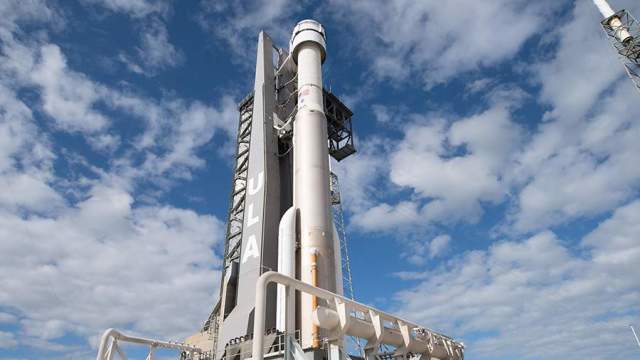Washington. October 19. INTERFAX - Boeing Corporation's promising CST-100 Starliner spacecraft, if technical problems are eliminated, can be launched into the second test flight (Orbital Flight Test-2 - OFT-2) in unmanned mode in the first half of 2022, John Vollmer, vice president and manager of the company's manned flight program, said on Tuesday during a NASA teleconference.
"Our task is to return to conducting safe flights as early as possible," he said. "With the current service module and crew module, we believe (test launch) in the first half of 2022."
No more specific dates were provided for when the ship will be able to launch into orbit.
During the teleconference, which was also attended by Steve Stitch, head of NASA's commercial manned flight program, and Michelle Parker, Chief Engineer of the Boeing Space Launch Department, data were presented on the situation with problematic valves of the Starliner service module thrusters, due to which the second test launch of the spacecraft to the ISS was canceled in early August.
The launch of the second OFT-2 test mission to the ISS was planned to be carried out on August 3, but due to technical problems, it was canceled three hours before the launch. Problems were identified in the operation of 13 valves of the low-thrust engines of the Starliner service module.
According to NASA, experts have not yet fixed the problem. Boeing and NASA are now deciding whether to replace the service module at all or continue trying to fix the current one.
Boeing is developing a manned spacecraft CST-100 Starliner under a contract with NASA. Like SpaceX, it was chosen by the American Space Agency as a developer of new systems for delivering American astronauts to the ISS. SpaceX has already completed two such regular missions with the help of its Crew Dragon ships. The third one is due to take place at the end of October. Meanwhile, Boeing is still at the stage of testing its ship in unmanned mode.
During the second unpiloted mission, the Starliner ship should dock with the ISS, in which it will stay from 5 to 10 days, after which it will return back to Earth.
On December 20, 2019, as part of the first test flight without a crew, due to software problems, the Starliner deviated from the route, entered an abnormal orbit, overspent fuel and could not dock to the ISS. It returned to Earth two days after launch. Nevertheless, he made a successful soft landing at the White Sands proving ground in New Mexico. This was the first landing of the American descent system on land. All previous American vehicles were brought to the ocean.
Boeing continues to investigate what led to the blockage of 13 valves. The main version is that nitrogen tetraoxide (nitrogen tetroxide - NTO) is an oxidizer of rocket fuel that leaked from the valve, coming into contact with moisture, formed nitrogen oxide, which caused corrosion of the valve.
Boeing has already removed several valves from the ship for thorough research.
One of the most important questions is why corrosion appeared on this ship and was not detected during the first test flight of the Starliner and all ground tests. The difference between the first flight and the second launch attempt is only the difference in the time of refueling before launch, as well as humidity (due to weather conditions at that time of year at the Cape Canaveral cosmodrome in Florida), which led to the appearance of excessive amounts of moisture that entered the compound with nitrogen tetraoxide.
Boeing plans to do everything possible to prevent moisture from forming in the valves. In particular, the issue of installing heaters to prevent its occurrence is being considered as a solution.
The company points out that troubleshooting the valves of the low-thrust propulsion system of the service module is the only problem of the Starliner ship. All other systems are normal and ready for use.
Since the first test flight, Boeing and NASA have made about 80 other corrective changes to the ship's systems before the second test test. If the second flight is successful, NASA can certify the Starliner for the first test flight with astronauts on board.
Under the contract with NASA, Boeing Corporation received more than $ 5 billion for the development, production of the Starliner spacecraft, as well as the implementation of its missions to deliver astronauts to the ISS and return them to Earth. It is designed for a crew of up to seven people.

